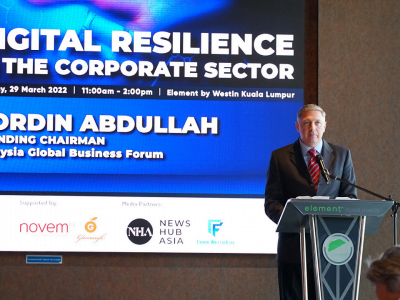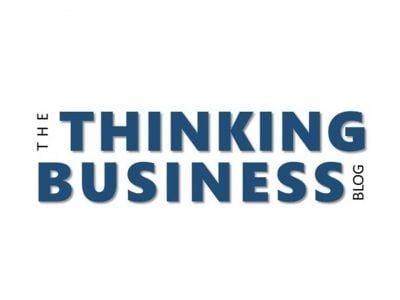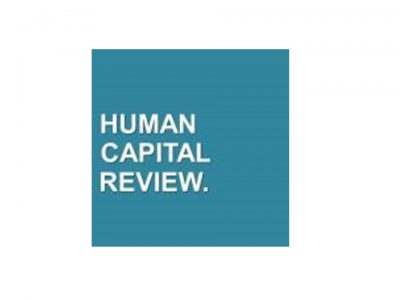- Allianz Global Corporate & Specialty (AGCS) highlights macroeconomic risks such as inflation and insolvency and their impact on Directors and Officers (D&O) insurance
- Cyber and ESG-related risks are driving an increasing number of lawsuits and litigation against companies and their boards
- US remains a securities class action hotspot, despite downward trend in new filings
- D&O insurance market seeing a favorable shift for buyers, but inflation and current risk environment means the potential for more frequent and severe losses remains
MUNICH, GERMANY – Media OutReach – 13 December 2022 – Which are the main factors driving the possibility that a company and its board of directors may be sued by investors or other stakeholder groups in 2023? A poor financial performance or even insolvency amid economic uncertainty and the prospect of a global recession, a lack of robust cyber security and governance processes, or an inadequate or non-compliant response to environmental, social and governance (ESG) issues are among the key risk trends in the Directors and Officers (D&O) insurance space, according to Allianz Global Corporate & Specialty (AGCS). Despite a downward trend in new filings, US class action securities litigation remains a key concern, particularly around mergers, while cryptocurrency companies and exchanges are subject to increasing activity, the insurer’s annual D&O report also notes.
“The recent decline in the number of filed securities and class actions in the US, coupled with an influx of new entrants, has created a more favorable market for corporate buyers of D&O insurance after double-digit percentage premium increases across key markets in 2021,” says Vanessa Maxwell, Global Head of Financial Lines at AGCS. “However, there is still a lot of risk facing insurers as macroeconomic issues and a potential slowdown loom, conditions which typically lead to an uptick in D&O claims. Inflation is likely to influence future claims through larger settlements. Cyber risk remains at an elevated level and is now seen as a core duty of D&Os, with increasing scrutiny on how they respond. Meanwhile, ESG-related liabilities – whether it is inadequate action on climate change or diversity and inclusion issues – can potentially become significant exposures for D&O insurance as well.”
From the energy crisis to stock market volatility, it’s a gloomy economic environment
“More than ever, D&O underwriters are focused on the financial strength of a company, particularly around liquidity. With global economic uncertainties progressing, carriers are closely monitoring if the trend of increased Chapter 11 filings (in the US), which impact both public and private companies will continue in 2023,” says Katie Fioretti, Global Head of Management Liability Commercial at AGCS.
Half of the countries analyzed by Allianz Research recorded double-digit increases in business insolvencies during the first half of 2022, with the SME sectors in the UK, France, Spain, the Netherlands, Belgium and Switzerland accounting for two thirds of the rise. Overall, insolvencies are expected to increase by +19% in 2023 globally. An economic downturn typically brings a higher risk of D&O claims: A study by broker Marsh found that between 2005 and 2007 the firm received an average of 200 to 300 D&O claims in the UK. With the onset of the financial crisis, claims notifications rose by 75% to around 500 in 2008, peaking in excess of 1,600 in 2012. In the US, filings and enforcement actions – a proxy for claims frequency – doubled to over 2,000 at their 2011 peak, compared to around 1,000 in 2006, according to Advisen.
“The likelihood that a public company will be sued in a securities class action increases when financial performance is poor, a company’s share price drops or there is a risk of bankruptcy. In such scenarios, investors may argue that the company failed to disclose the challenges it was facing to maintain its earnings guidance, driving a potential increase in D&O claims,” says David Van den Berghe, Global Head of Financial Institutions at AGCS.
Cyber risk management as a board responsibility and ESG exposures
Issues such as data security and information protection are now core areas to watch for directors, the report notes. Investors increasingly view cyber security risk management as a critical component of a company’s board risk oversight responsibilities. As fiduciaries, board members are therefore expected to develop and maintain accountabilities for IT security before, during and after any cyber incident. Alleged failures can be seen as a breach of duty.
“Around the world, directors have already been called to account, including in derivative and direct litigation, due to their alleged failures to institute appropriate governance and protection against cyber security risk. Moreover, major breaches experienced by publicly traded firms have damaged investor confidence, causing share price drops, and thereby becoming ‘events’, which again can give rise to costly class action securities litigation. Boards therefore need to initiate and implement a cyber risk management structure that covers the entire organization,” says Rishi Baviskar, Global Cyber Experts Leader at AGCS’ Risk Consulting team.
Regulatory action or litigation risks due to ESG-related issues are another major concern for boards, driven by increasing reporting and disclosure requirements around such topics, which could trigger claims in case of an inadequate response or non-compliance. In addition, companies and their boards also face the prospect of increasing litigation from environmental or climate groups, activist investors or even their own employees. Climate change litigation is increasing, with over 1,200 cases filed internationally in the last eight years, compared with just over 800 cases between 1986 and 2014. Most of these were filed in the US, but there are increasing filings at international courts or tribunals: 2021 saw the highest annual number of recorded cases outside the US. Another risk is misrepresenting ESG credentials or achievements – so-called greenwashing – which can also lead to regulatory action, litigation, and shareholder suits.
“ESG-related information is increasingly becoming a key checkpoint for insurers when it comes to the risk assessment of a company. Those companies with strong ESG frameworks and governance will likely find insurers more willing to offer capacity,” says Maxwell.
Litigation in the US market
Litigation exposures are especially high for companies domiciled or doing business in the US and merger objection suits persist. While the frequency of US filings has declined since 2019 and 2022 is expected to continue this downward trend, the aggregate quantum of damages potentially at issue has skyrocketed. While there has been no general rise in alleged investor loss valuation for all cases, a few very large losses in 2022 have represented a disproportionately higher share of aggregate alleged shareholder losses than the historical averages over the past 20 years. According to Cornerstone Research, lawsuits filed against only three communications industry companies account for as much alleged investor loss as the aggregate of all securities class action lawsuits filed in 2021.
Cryptocurrency sees increasing litigation
Another new trend includes the increasing targeting of cryptocurrency companies and exchanges (10 suits filed in the first half of 2022 as compared to 11 for all of 2021, 13 in 2020 and four in 2019). This may not be surprising given the recent roiling fluctuations in the valuation of digital currencies, which continued in November 2022 with the collapse of the world’s second largest cryptocurrency exchange, FTX – authorities around the world are investigating for potential breaches of securities laws – and the fact that regulatory oversight has increased.
Hashtag: #Allianz
The issuer is solely responsible for the content of this announcement.
About Allianz Global Corporate & Specialty
![]() Allianz Global Corporate & Specialty (AGCS) is a leading global corporate insurance carrier and a key business unit of Allianz Group. We provide
Allianz Global Corporate & Specialty (AGCS) is a leading global corporate insurance carrier and a key business unit of Allianz Group. We provide ![]() risk consultancy,
risk consultancy, ![]() Property-Casualty insurance solutions and
Property-Casualty insurance solutions and ![]() alternative risk transfer for a wide spectrum of commercial, corporate and specialty risks across nine
alternative risk transfer for a wide spectrum of commercial, corporate and specialty risks across nine![]() dedicated lines of business and
dedicated lines of business and ![]() six regional hubs.
six regional hubs.
Our customers are as diverse as business can be, ranging from Fortune Global 500 companies to small businesses. Among them are not only the world’s largest consumer brands, financial institutions, tech companies and the global aviation and shipping industry, but also floating wind farms or Hollywood film productions. They all look to AGCS for smart solutions to, and ![]() global programs for, their largest and most complex risks in a dynamic, multinational business environment and trust us to deliver an outstanding
global programs for, their largest and most complex risks in a dynamic, multinational business environment and trust us to deliver an outstanding ![]() claims experience.
claims experience.
Worldwide, AGCS operates with its own teams in ![]() more than 30 countries and through the Allianz Group network and partners in over 200 countries and territories, employing around 4,250 people. As one of the largest Property-Casualty units of Allianz Group, we are backed by strong and stable
more than 30 countries and through the Allianz Group network and partners in over 200 countries and territories, employing around 4,250 people. As one of the largest Property-Casualty units of Allianz Group, we are backed by strong and stable ![]() financial ratings. In 2021, AGCS generated a total of €9.5 billion gross premium globally.
financial ratings. In 2021, AGCS generated a total of €9.5 billion gross premium globally.
For more information please visit our website ![]() www.agcs.allianz.com
www.agcs.allianz.com
No duty to update
Allianz assumes no obligation to update any information or forward-looking statement contained herein, save for any information we are required to disclose by law.
Privacy Note
Allianz SE is committed to protecting your personal data. Find out more in our privacy statement.


































